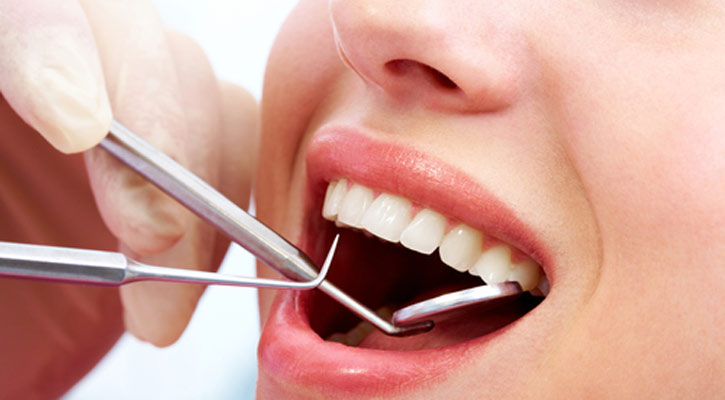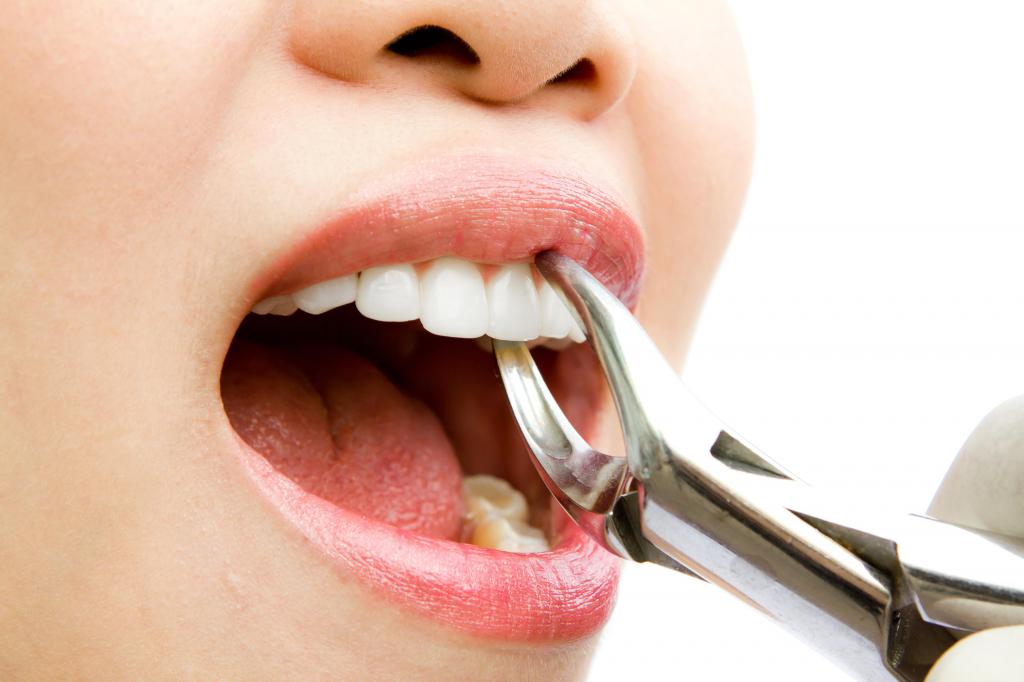The crown is a fixed prosthesis that acts as a cap on a decayed tooth. The life of the crown is about 15 years, subject to certain regulations for the care and installation. If the patient develops pain or bad breath, then there is a need for urgent dismantling of the structure. The question of how crowns are removed from teeth worries patients, as many mistakenly believe that this is an unpleasant procedure.
Indications for the procedure
Prosthetics using crowns is a long and rather laborious process. Sometimes it can be accompanied by discomfort and pain. Before learning about how crowns are removed from teeth, it is necessary to study the bases on which this procedure is carried out.
The orthopedic device should be eliminated in the following cases:
- loss of stability due to the doctor’s mistakes during installation;
- destruction of an adjacent tooth;
- the appearance of toothache and an unpleasant odor;
- the presence of inflammatory processes;
- gum disease;
- excessive pressure on the free gum;
- damage to the prosthesis.
These problems can be avoided by contacting a highly qualified specialist in a clinic that provides a guarantee on the work done.
How are crowns removed from teeth?
In dentistry, various techniques are used that allow you to remove crowns. Depending on the target orientation and the overall clinical picture, the specialist will choose the best method of dismantling. Among the main methods for removing crowns are the following:
- Kopp's apparatus. This is a special dental tool that provides the ability to painlessly remove the prosthesis without resorting to the destruction of its structure. The device is a hook, which is launched using the button located on the holder. The specialist carries out the procedure, starting with the breakdown of cement with a drill. After that, special forceps are used, the crown picks up on them and ultimately comes off. This is the most painless and less traumatic method among existing ones. However, this unit may leave scratches on the ceramic coating, so the design will require restoration.
- The device "Coronaflex". This device operates on the basis of compressed air that destroys cement. In order to avoid damage to the tooth, at the beginning of the procedure, the device operates with minimal impact force. In the chewing zone, the removal of the crown is carried out using special forceps. The device is installed so that the body is located under the arc of forceps. As auxiliary tools, brackets are used, which are fixed on the crown. The use of this device avoids the risk of damage to the prosthesis. However, the cost of the procedure using the Coronaflex apparatus is quite high. The use of this device is advisable if there is a need to dismantle an expensive crown.
- Sawing procedure. Carrying out the procedure excludes repeated prosthetics of the same crown. There is an erroneous opinion that the procedure is quite painful. However, in the process of its implementation, the patient does not experience any discomfort and pain. This method is used if the patient has inexpensive products that can be disposed of.
- Ultrasound. Exposure to sound waves contributes to the rapid loss of stability of the cement. However, this technique is applicable only to certain materials. Ultrasound is not used if the crowns are held on glass isomeric cement. In other cases, the use of ultrasound allows you to save the shape and model of the crown without visible damage.

How are crowns removed from the teeth and how painful is this procedure? The complexity and pain of these methods is largely determined by the qualifications and professionalism of the doctor. In that case, if it is necessary to remove the crown as a result of the destruction of the cement base, then the manipulation is absolutely painless. If the prosthesis is installed stably and firmly, and disassembly requires maintaining the integrity of the crown, then the procedure can cause certain discomfort. However, in such cases, local anesthesia is used, which eliminates the pain.
What are patients afraid of?
Crowns and bridges are fixed orthopedic structures, but this fact does not reduce the relevance of the question of whether it is painful to remove crowns from the teeth. Patients need to know that during the operation of crowns, they can become unusable after a certain period of time. Also, the cement on which the orthopedic device is held may collapse over time. Reviews of patients tell that there is nothing pleasant in carrying out this procedure.
When to visit a specialist?
Do not postpone a visit to the doctor for a long time, because timely treatment will quickly fix the problem without any complications. Reviews of patients note that pain occurs as a result of overheating of the crown during sawing. However, one should not be afraid of carrying out this procedure, since the use of modern anesthesia will minimize all unpleasant sensations during removal of the crown.
Self liquidation
Some patients try to remove the crown from the tooth at home in the absence of specialized equipment. Such attempts can lead to injuries of the soft tissues of the mouth and damage to the prosthesis. A doctor with experience and special equipment will painlessly carry out the procedure to eliminate the crown. Is it possible to remove the crown from the tooth yourself? This action will be justified only in the following cases:
- the crown has come unstuck and loosened along with the cement base;
- the product disintegrated, it became necessary to eliminate the remaining elements.
In order to avoid various unpleasant complications, the patient must immediately consult a specialist. In this case, the patient does not have to worry about how to remove the crown from the tooth itself at home. The cost and complexity of the process largely depends on the material from which the structure is made, as well as the type of device that will be used to extract the crown.
Procedure after the procedure
After removing the crown, the patient may experience discomfort. A specialist will examine the condition of the tooth in order to identify the cause of the pain. In order to carry out the diagnosis, radiography is performed. An X-ray image provides important information about the quality of the filling of the dental canals and the condition of the paradental structures. The following algorithm of actions depends on the individual situation. In the treatment of periodontitis, pulpitis and caries, the root canals of the tooth are filled.

After that, the doctor is engaged in the prevention of pathological processes that have arisen in the tissues using the method of anti-inflammatory therapy. At the finishing stage, the specialist will install a seal and provide further recommendations to the patient. If a specialist carries out tooth restoration, restoration measures are carried out that will prevent the destruction of the crown. In the event that the destruction of cement occurred, it is necessary to quickly and efficiently treat the stump with antiseptic preparations and fix the orthopedic device using dental cement. At the request of the patient, crowns can be replaced.
Therapy
The passage of a therapeutic course includes the following procedures:
- in order to eliminate infection and inflammatory processes, a specialist prescribes antibiotics or rinses using a solution of "Furacilin" or decoctions of herbs;
- in order to reduce pain, experts recommend the use of anti-inflammatory compresses that have an analgesic effect;
- with irreversible tissue damage, if a tooth hurts under the crown.
How to remove an orthopedic device painlessly and quickly, can tell any qualified specialist. Patients should be aware that in certain cases, the fixation of the crown will be impossible, which will entail the need for implantation.
What you should pay attention to?
Dental prosthetics is an expensive service provided by dental clinics. Before carrying out this procedure, you must carefully approach the search for a highly qualified specialist. This will avoid negative consequences and unforeseen situations due to mistakes made.
What to expect from the procedure?
Many patients are interested in the question of whether it is painful to remove crowns from the teeth. Patient reviews report that pain depends on the reason for the procedure for removing the orthopedic device. In the event that a sudden destruction of the cement occurred, the process will be completely painless.
Of great importance is the experience of a specialist who performs the procedure of dismantling an orthopedic device. Some patients are interested in how ceramic-metal crowns are removed from the teeth and whether there is a specificity for such an operation. This procedure is carried out in the same way as the elimination of crowns from other materials. Local anesthesia is used if it is an inflammatory disease of the gum or tooth.
Patient opinions
In order to find out whether it is painful to remove crowns from teeth, patients' reviews are curious to study and draw certain conclusions. Many comments report that anesthesia can completely eliminate discomfort during the crowns removal procedure. Other reviews note that pain is manifested purely individually, depending on the existing pain threshold. Most patients report that the procedure was not accompanied by special pain. Many clients voluntarily refuse anesthesia because they do not want the accumulation of such drugs in their own body. However, everyone decides for himself the need for anesthesia. Comments say that the manipulation of the removal of the crown should be performed with anesthesia only in the presence of inflammatory processes.